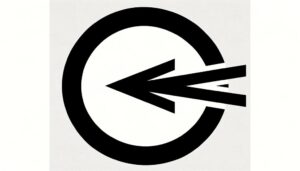What Are the Spiritual Meanings of the Three Wavy Lines Symbol?
The symbol of three undulating lines has rich and varied meanings across different contexts. In ancient Egyptian hieroglyphics, it represented water, life, and purification.
Indigenous cultures often incorporate undulating lines in tattoos and art to symbolize life's journey and spiritual connections. In modern times, the symbol finds relevance in digital icons for Wi-Fi, signifying smooth and reliable connectivity.
These lines also denote fluidity and natural energy in Chinese culture, connecting to the essential life force, 'qi'. Each interpretation highlights a different facet of life and energy.
Discover how these diverse perspectives converge and enrich this symbol's meaning.
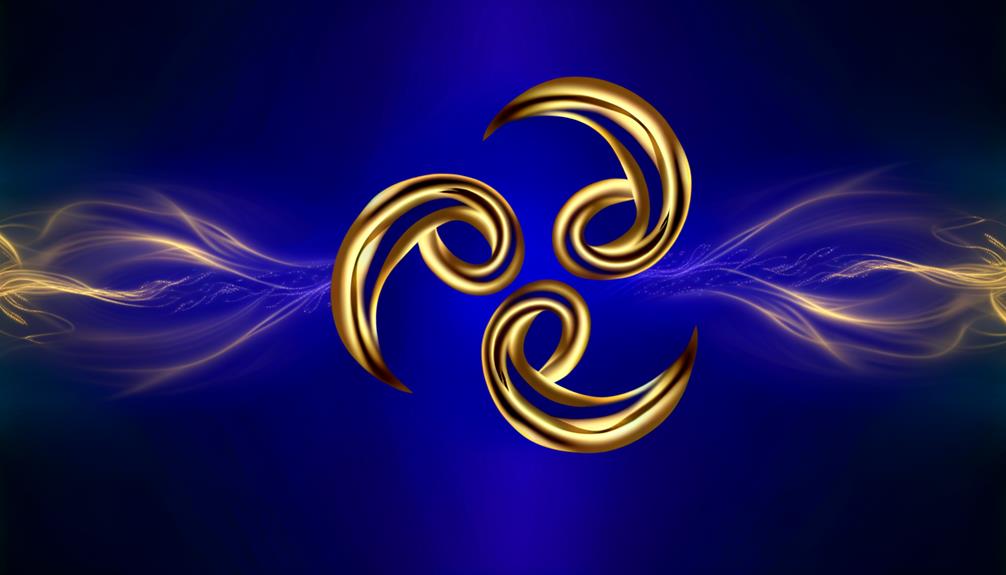
Key Takeaways
- Ancient Egyptian hieroglyphs depict three wavy lines to symbolize water, life, and sustenance.
- In Chinese culture, three wavy lines represent the natural flow of energy, known as 'qi'.
- Wavy lines in tribal tattoos often signify life's journey and spiritual connections.
- Three wavy lines can symbolize fluidity, transformation, and subconscious depths in various cultural contexts.
- Modern symbols use wavy lines to denote smooth and reliable connections, like Wi-Fi signals.
Ancient Origins

The wavy lines symbol, which has been discovered in numerous ancient cultures, often held significant religious and cosmological meanings, reflecting humanity's early attempts to comprehend the natural and spiritual worlds.
In Mesopotamian art, the wavy lines frequently symbolized water, an essential element for life and a key feature of their mythology.
Similarly, in ancient Chinese artifacts, the symbol was often associated with the flow of energy, or 'qi,' integral to their philosophical and medical traditions.
These interpretations highlight a universal endeavor to capture dynamic natural forces through symbolic representation.
Ergo, the wavy lines served not merely as decorative elements, but as profound expressions of early civilizations' intricate understanding of their environment and their place within the cosmos.
Egyptian Hieroglyphics
In Egyptian hieroglyphics, wavy lines frequently represented water, symbolizing its essential role in sustaining life and civilization.
This symbol's evolution highlights the intricate relationship between environmental elements and linguistic expression in ancient Egypt.
Ancient Water Representation
Egyptian hieroglyphics frequently utilized wavy lines to symbolize water, reflecting the civilization's deep connection to the Nile River and its crucial role in their daily life and spiritual beliefs.
The Nile was not merely a geographical feature but a life-giving force, necessary for agriculture, transportation, and sustenance. The hieroglyphic representation of water through three wavy lines underscores its omnipresence and significance.
This symbol was often seen in texts related to irrigation, fertility, and even in religious contexts, where water was synonymous with purification and rebirth. By embedding these wavy lines in their writing system, the Egyptians conveyed a profound respect for the natural world and its cyclical patterns, demonstrating an intricate understanding of their environment.
Hieroglyphic Symbol Evolution
As Egyptian civilization progressed, the wavy lines symbol evolved not only in its artistic representation but also in its contextual applications, reflecting broader shifts in cultural, technological, and religious paradigms.
Initially representing water, the symbol's meaning expanded to encompass notions of fluidity and continuity, mirroring the Nile's central role in Egyptian life. Hieroglyphic scripts saw this symbol being used in varying contexts—from denoting natural elements to abstract concepts such as life and fertility.
Over centuries, the symbol's stylistic nuances became more sophisticated, illustrating advancements in artistic techniques and engraving precision. This evolution signifies how Egyptian hieroglyphics were dynamic, adapting to changing worldviews while preserving their core significance in the tapestry of ancient Egyptian civilization.
Tribal Tattoos
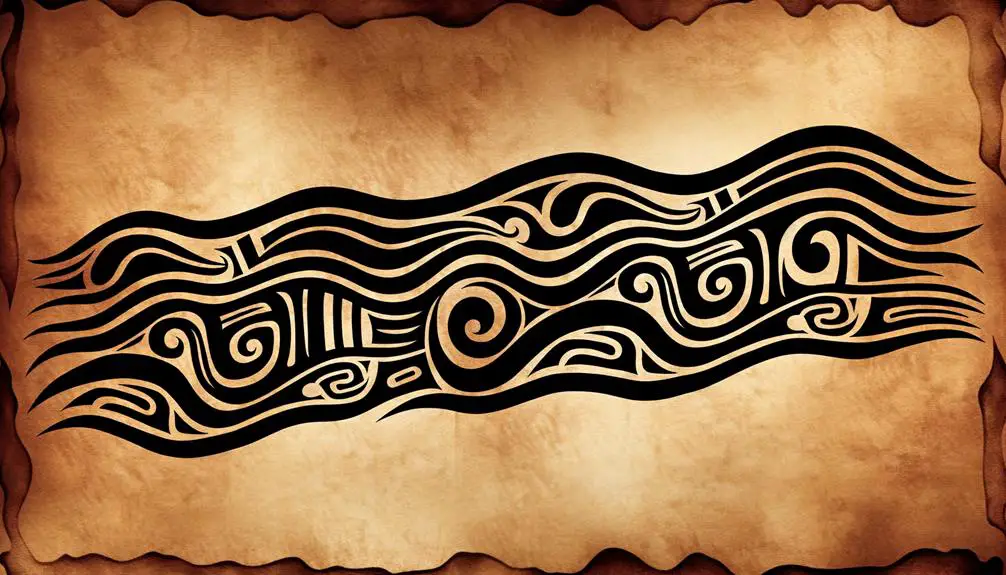
Tribal tattoos, often characterized by their intricate wavy lines and patterns, serve not only as personal adornments but also as profound expressions of cultural identity and heritage.
These designs, varying across different indigenous communities, encapsulate stories, spiritual beliefs, and social status. The wavy lines, in particular, can symbolize life's journey, connections to nature, or ancestral lineage.
Such tattoos are not merely decorative; they are laden with meaning, often passed down through generations. Their aesthetic complexity mirrors the rich tapestry of the cultures from which they originate.
Understanding tribal tattoos requires appreciating their historical context and the deep, often sacred, significance they hold for the communities that bear them. This highlights the intricate interplay between art, identity, and tradition.
Water Symbolism
Water, often revered across various cultures, embodies a multitude of symbolic meanings that encompass life, purity, transformation, and the subconscious mind.
The three wavy lines symbol, frequently associated with water, encapsulates these diverse attributes, serving as a visual shorthand for its complex symbology.
In various mythologies, water is seen as the source of all life, representing fertility and renewal. Its purity is linked to cleansing rituals and spiritual rebirth.
The transformative nature of water echoes the cycles of change and adaptation inherent in human existence.
Psychologically, water symbolizes the depths of the subconscious, revealing hidden truths and emotions.
Therefore, the wavy lines symbol offers a profound encapsulation of water's multifaceted significance in human culture and psyche.
Air and Wind
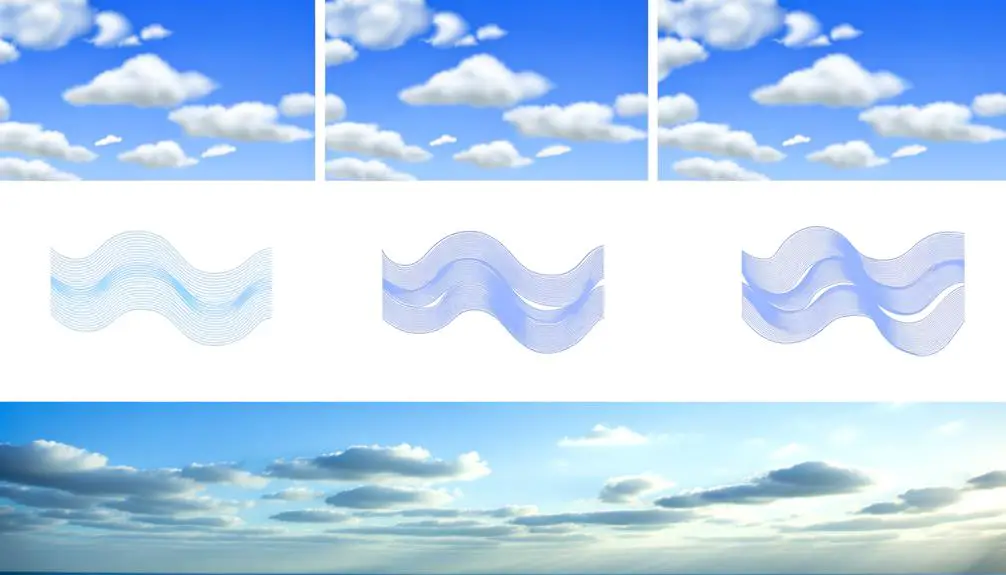
Air and wind, powerful and omnipresent forces of nature, embody a rich tapestry of symbolic meanings that traverse freedom, change, and the ethereal. When represented by three wavy lines, these elements often signify the unseen forces that influence our lives.
In various cultural contexts, air symbolizes intellect and communication, as it carries sound and breath. Wind, on the other hand, represents dynamic transformation and the passage of time, embodying both gentle breezes and formidable gusts.
Together, these symbols suggest a fluidity that is essential for life and progress, reminding us of the constant motion and interconnectedness of the natural world. Understanding these symbols invites a deeper appreciation of how intangible forces shape our physical and spiritual existence.
Energy and Waves
In the domain of symbolism, wavy lines often represent the fundamental concepts of energy and waves, encapsulating the dynamic ebb and flow that governs both physical and metaphysical phenomena. These curvilinear forms evoke the continuous transmission of energy through various mediums, reflecting both scientific principles and esoteric beliefs. The undulating pattern suggests movement and transformation, integral to understanding natural forces and their impact on existence.
Ocean Waves:
Visualize the rhythmic rise and fall of sea waves, embodying cyclical energy.
Sound Waves:
Consider the propagation of sound, illustrating how vibrations travel through air.
Light Waves:
Imagine the spectrum of light waves, symbolizing the interplay of energy and matter.
This imagery underscores the profound connection between wavy lines and the essence of energy in motion.
Modern Branding
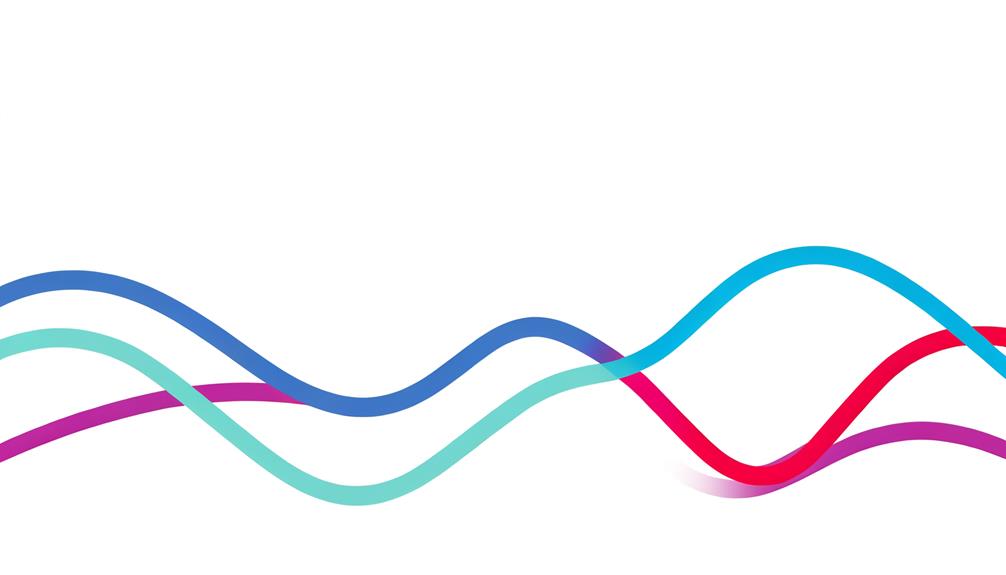
In contemporary branding, wavy lines have emerged as a versatile design element symbolizing fluidity, adaptability, and innovation. This visual motif resonates with consumers seeking brands that reflect modernity and dynamism.
The inherent flexibility of wavy lines allows them to be seamlessly integrated into various brand identities, from tech startups to fashion labels. Their organic, flowing nature communicates a sense of continuous movement and progress, aligning with the forward-thinking ethos many companies wish to project.
Additionally, wavy lines can evoke emotional responses, creating a connection between the brand and its audience. By employing this symbol, brands articulate a narrative of resilience and evolution, essential in today's rapidly changing market landscape. Therefore, wavy lines transcend mere aesthetics, becoming a strategic branding tool.
Digital Icons
As digital interfaces become increasingly integral to daily life, wavy lines have found a prominent role in the design of digital icons, symbolizing connectivity, fluid user experiences, and technological sophistication. These subtle yet powerful visuals serve to enhance the user's interaction with technology, often indicating seamless operations or intuitive navigation.
Connectivity: Wavy lines are frequently used in icons related to Wi-Fi and network connectivity, suggesting a smooth and reliable connection.
Fluidity: The undulating form conveys a sense of progression and ease, often used in loading animations to signify a process that is in continuous motion.
Sophistication: Their dynamic nature reflects modern design principles, appealing to a tech-savvy audience by evoking a sense of cutting-edge innovation.
This multifaceted symbol thereby enhances both functionality and aesthetic appeal in digital design.
Cultural Interpretations
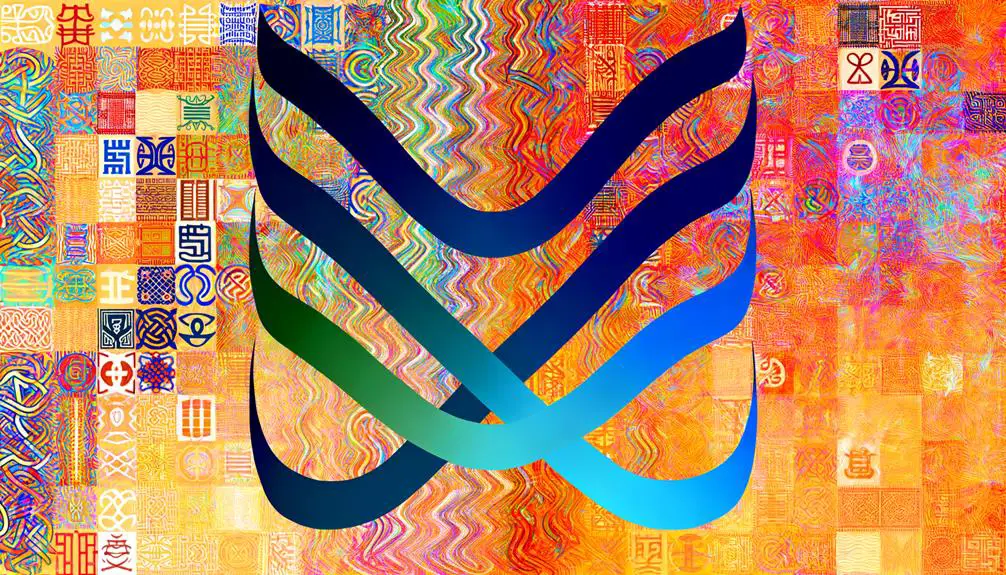
Beyond their functional and aesthetic roles in digital design, wavy lines also hold rich cultural significance, reflecting diverse interpretations across various societies and historical contexts.
In ancient Egyptian hieroglyphs, three wavy lines symbolized water, representing life and sustenance, pivotal elements in their civilization.
Similarly, in Chinese culture, wavy lines often denote fluidity and the natural flow of energy, or 'qi,' integral to their philosophies of balance and harmony.
Indigenous art from Australia employs wavy lines to depict landscapes and spiritual journeys.
These cultural contexts underscore the universal yet varied meanings attributed to wavy lines, emphasizing their role in conveying profound concepts such as life, energy, and spirituality, transcending mere visual appeal.
Conclusion
Ironically, the three wavy lines symbol, ostensibly simple, traverses an intricate landscape of meanings—from ancient hieroglyphics and tribal tattoos to modern branding and digital icons.
While ostensibly representing elemental forces such as water and air, its enduring presence underscores humanity's perpetual quest to distill complex concepts into minimalist forms.
This ubiquity across cultures and epochs suggests a shared, almost ironic, human tendency to seek profound significance in what is, at first glance, deceptively straightforward.





